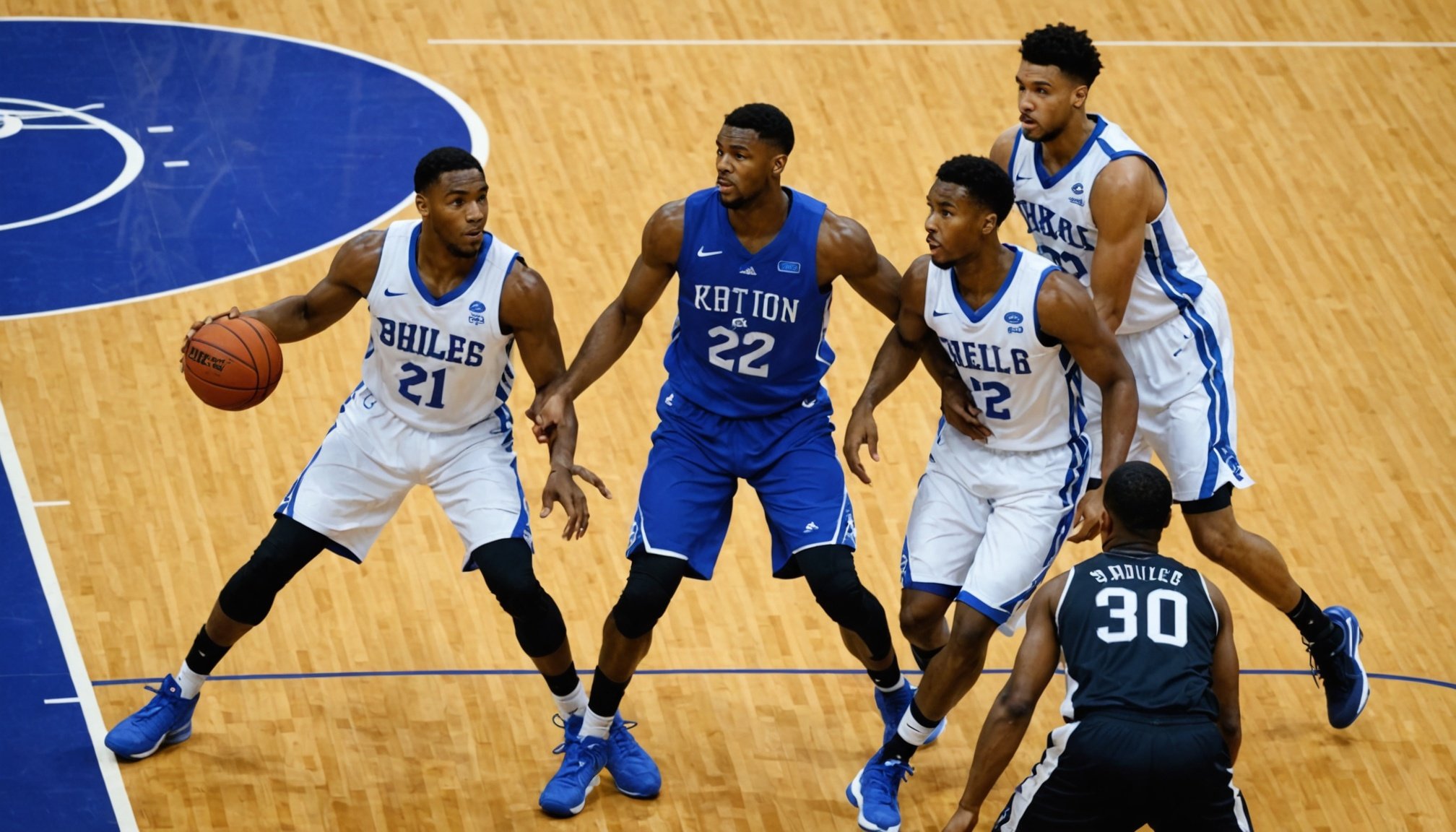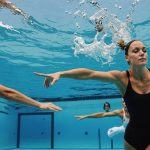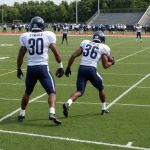Unlocking Defensive Excellence: Strategies for UK Basketball Players to Utilize Visualization Techniques
The Power of Visualization in Sports
Visualization, or the practice of mentally rehearsing a performance, is a powerful tool that has been utilized by athletes across various sports, including basketball. This technique can significantly enhance a player’s mental preparation, decision making, and overall performance on the court. For UK basketball players, incorporating visualization into their training regimen can be a game-changer.
How Visualization Works
Visualization works by engaging the brain’s neural pathways in a way that mimics actual physical performance. When a player visualizes a game scenario, their brain processes the information similarly to how it would during an actual game. This can help in reinforcing positive behaviors, improving reaction time, and enhancing mental toughness.
Also to see : Unlocking Agility: Creative Strategies for UK Basketball Teams to Enhance Players” Lateral Movement
“Visualization is a key component of mental preparation. It helps players to focus, build confidence, and prepare for different game scenarios,” says Dr. Jason Selk, a renowned sports psychologist.
Integrating Visualization into Weekly Training
To effectively integrate visualization into their weekly training, basketball players should follow a structured approach.
Also to discover : Top Strategies for UK Basketball Players to Enhance Game Day Concentration
Step-by-Step Guide to Visualization
- Preparation: Find a quiet, comfortable space where you can relax without distractions.
- Relaxation: Use breathing exercises or other relaxation techniques to calm your mind and body.
- Imagery: Close your eyes and vividly imagine yourself performing on the court. Focus on specific defensive scenarios, such as blocking shots or intercepting passes.
- Sensory Details: Incorporate sensory details like the sound of the crowd, the feel of the ball in your hands, and the sight of your teammates moving in sync.
- Positive Self-Talk: Use positive affirmations to reinforce your confidence and focus.
Techniques to Enhance Visualization
Several techniques can help players enhance their visualization practice.
Guided Imagery
Guided imagery involves listening to a guided audio that walks you through a visualization scenario. This can be particularly helpful for players who are new to visualization.
Self-Talk
Positive self-talk is crucial during visualization. Encourage yourself with phrases like “I am a strong defender” or “I can anticipate every move.”
Visualization Before Games
Visualizing the game before it happens can help players feel more prepared and confident. Imagine yourself making key defensive plays and contributing to your team’s success.
Case Studies and Examples
The Success of Michael Jordan
Michael Jordan, one of the greatest basketball players of all time, was known for his rigorous mental preparation. He often visualized himself making game-winning shots and performing exceptionally on the court. This mental preparation was a key factor in his success.
Visualization in Team Sports
Visualization is not limited to individual sports; it can also be applied to team sports like basketball. Teams can visualize game scenarios together, enhancing their understanding and coordination.
“Visualization helped us anticipate and react to the opponent’s moves more effectively. It was a crucial part of our team’s defensive strategy,” says a coach from a UK basketball team.
Comparison of Visualization Techniques
Here is a comparative table of different visualization techniques that basketball players can use:
| Technique | Description | Benefits | Challenges |
|---|---|---|---|
| Guided Imagery | Listening to a guided audio that walks you through a visualization scenario. | Easy to follow, especially for beginners. | Requires access to guided audio resources. |
| Self-Talk | Using positive affirmations during visualization. | Boosts confidence and focus. | Can be difficult to maintain positive self-talk consistently. |
| Pre-Game Visualization | Visualizing the game before it happens. | Enhances preparation and confidence. | May not be effective if not done correctly. |
| Team Visualization | Visualizing game scenarios with the team. | Improves team coordination and understanding. | Requires coordination and commitment from all team members. |
Practical Insights and Actionable Advice
Creating a Visualization Routine
To make visualization a part of your weekly training, allocate a specific time each day or week for this practice. Here are some steps to create a routine:
- Set a Schedule: Decide on a specific time each day or week that works best for you.
- Find a Quiet Space: Identify a quiet, comfortable space where you can relax and focus.
- Use Technology: Utilize apps or websites that offer guided visualization sessions.
- Track Progress: Keep a journal to track your progress and note any improvements in your performance.
Combining Visualization with Physical Training
Visualization should complement, not replace, physical training. Here’s how you can combine both:
- Musclation Bike and Breathing Exercises: Use a musclation bike or other fitness equipment while practicing breathing exercises to enhance both physical and mental performance.
- Combat Fitness: Incorporate combat fitness training to improve reaction time and physical performance.
- Fitness Football and Basketball Drills: Engage in specific drills for football and basketball that focus on defensive skills, such as tackling in football or blocking shots in basketball.
Performance Metrics and Evaluation
To evaluate the effectiveness of visualization techniques, players and coaches can use several performance metrics.
Reaction Time
Measure the player’s reaction time during defensive scenarios. Improved reaction time can be a direct result of enhanced visualization practice.
Decision Making
Evaluate the player’s decision-making skills during games. Better decision making can indicate improved mental preparation through visualization.
Physical Performance
Monitor the player’s physical performance metrics such as speed, agility, and endurance. Improved physical performance can be linked to better mental focus achieved through visualization.
Quotes from Experts
“Visualization is not just about seeing yourself perform well; it’s about feeling the emotions and sensations associated with that performance. This holistic approach can significantly enhance a player’s mental toughness and performance,” says Dr. Michael Lardon, a sports psychologist.
“Coaches in sports need to understand the importance of mental preparation. Visualization is a tool that can help players enhance their skills, build confidence, and perform better under pressure,” adds Coach John Wooden, legendary basketball coach.
Visualization is a powerful tool that can help UK basketball players unlock their defensive excellence. By integrating visualization into their weekly training, using various techniques, and combining it with physical training, players can enhance their mental and physical performance. Remember, the key to successful visualization is consistency, positive self-talk, and a structured approach.
Final Tips
- Consistency: Make visualization a regular part of your training routine.
- Positive Self-Talk: Use positive affirmations to reinforce your confidence and focus.
- Combination with Physical Training: Ensure that visualization complements your physical training.
- Seek Professional Help: Consult with sports psychologists or experienced coaches to tailor your visualization practice.
By following these strategies and techniques, UK basketball players can take their defensive skills to the next level and achieve greater success on the court.











